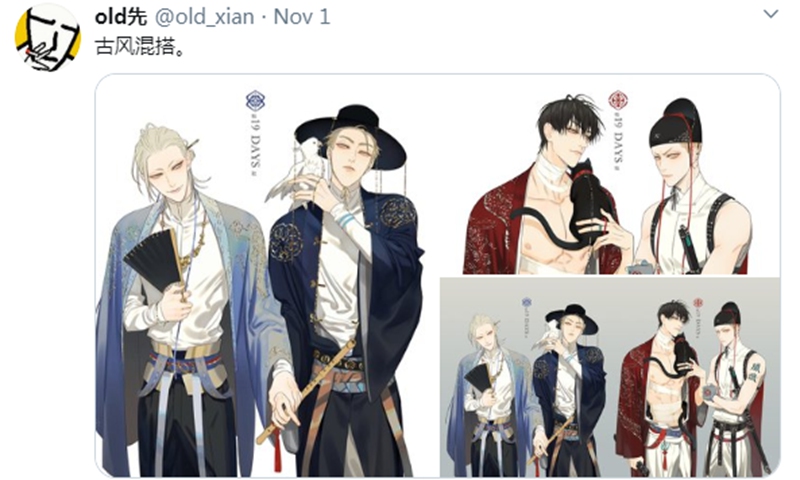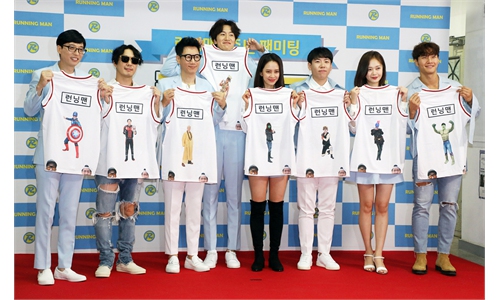ARTS / COMICS
Chinese netizens fight back against "copying Korea Hanbok' on social media

Photo: screenshot of the tweet
When Chinese comic book artist Old Xian tweeted on Sunday a drawing of four characters from his popular web comic dressed in traditional clothing, he probably never imagined it would act as a matchstick igniting a fiery debate between Chinese and South Korean netizens about which country this clothing originated from.
A popular Chinese cartoonist with more than 10 million followers on Chinese social media platform Sina Weibo and over 260,000 on Twitter, Old Xian is the artist behind the well-known Boys' Love comic 19 Days.
The drawing of the four characters from the comic, which is set in modern times, came with a caption in Chinese, gufeng hunda (lit: old style blended), but did not make mention of what culture inspired the clothing the characters were wearing.
Many South Korean netizens launched an attack in comments to the post, saying that some of the clothing in the painting was from ancient Korea and asked the painter to give a clear indication of their origin.
Old Xian replied on Monday that his reference for the clothing, especially a wide brim black hat, was an ancient painting unearthed from the tomb of a Ming Dynasty (1368-1644) prince that is currently in the Shandong Museum as well as some Chinese films taking place during the Ming.
"The reason I paint is to make readers happy and thank everyone who likes me. Finally, I wish the world is full of peace and love," Old Xian wrote in Chinese at the end of the reply.
However, the follow-up reply did not quiet down South Korean netizens' protest. Some netizens launched the hashtag #Korea-hanbok_challenge for people to post photos of traditional Korean clothing in an attempt to point out the similarities between the clothing and Old Xian's illustrations.
Lots of Chinese netizens later joined the battle to stand with the comic book artist. They posted many images from historical materials, including a painting featuring the son of the first emperor of the Ming Dynasty wearing the same wide brim hat, to show that this clothing appeared at least as early as the Ming.
Even in a video posted by South Korean media outlet, it supported Chinese netizens and noted that around the 15th century the Korean gat, a traditional hat, was spherical and that it was only until the end of the Joseon Dynasty (1392-1897) that these hats became the wide brim flat top hat as seen in Old Xian's picture.
"Why do South Korean people always think everything originated from their country? Can they learn some of the history of other countries?" one Chinese netizen commented on Sina Weibo.
One Chinese netizen, Qi Luo, told the Global Times that he feels that these South Korean netizens are being too narrow-minded by provoking this argument.
"In ancient times, Korea was dependent on our nation and Chinese culture such as food and clothing was introduced to Korea. But it cannot be denied that Korean culture also had an impact on Chinese people's lives. This is a process of cultural exchange," Qi told the Global Times.

